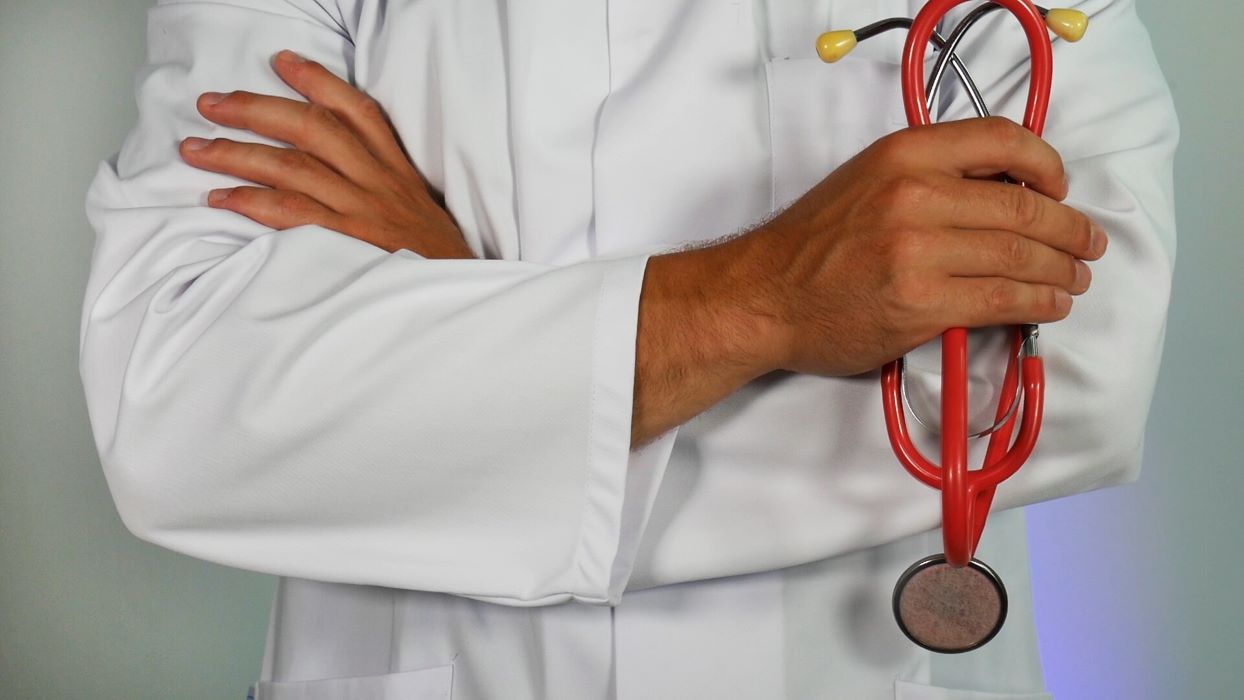ARTICLE SUMMARY:
Nate Favini, MD, Medical Lead at Forward, explains how his health tech company is dealing with the coronavirus crisis.
As the COVID-19 pandemic makes its way across the US, primary care providers are finding themselves on the frontlines of patient screening, monitoring, and education efforts. Many are reaching out to telemedicine providers to help manage their growing caseloads and provide a remote care alternative that can help dampen the spread of this disease.
One primary care provider already well positioned to deal with the crisis is Forward, which has a tech-heavy, subscription-based primary care model—with offices in several large US cities—designed to offer a more modern, patient-friendly primary care experience. (See “The Shift to Digital Primary Care: What Medtech Needs to Know,” MedTech Strategist, October 30, 2019.) Forward built its care model on a digital health platform that includes, as part of its offerings, an app that provides members with 24/7 remote access to the Forward care team.
But, as well positioned (technology-wise) as it might have been prior to the crisis, the coronavirus pandemic has prompted the company to rapidly adapt and further bolster its remote care offerings. Forward recently added a COVID-19 screening tool to its app, and it also launched a new program called Forward At Home, which combines unlimited telemedicine consultations with interactive health data visualization and at-home vital signs monitoring.
Forward At Home patients will use a connected thermometer, pulse oximeter, ECG device, and blood pressure cuff to remotely monitor their vital signs, and the system will automatically alert the patient’s physician if the monitoring data suggests that an intervention is needed. The collected data is accessible in the member’s mobile app for tracking over time, and the program includes an interactive shared dashboard that enables both patients and doctors to see relevant health history, lab results, and sensor data during video visits. Forward says remote vital signs monitoring was “the key missing link” that now enables Forward physicians to continue to treat patients’ typical day-to-day needs while also responding to COVID-19.
In addition to Forward At Home, Forward recently rolled out a rapid serological blood test for its members, purchased from diagnostics companies, that it is using in conjunction with PCR-based COVID-19 screening tests at its clinics and drive-through sites nationwide. Unlike PCR-based tests, which are used to detect active disease, the serological test can identify people who were previously exposed to COVID-19 and have evidence of antibodies/immunity to the disease, including those who may have had no disease symptoms.
In the following brief Q&A, Nate Favini, MD, Medical Lead at Forward, discusses the steps Forward is taking to deal with the crisis and the impact the pandemic is having on both providers and patients. According to Favini, the growing number of COVID-19 cases is “overwhelming” the healthcare system and telehealth is more essential than ever to meeting people’s healthcare needs.
MedTech Strategist: As I understand it, Forward is currently using telemedicine and virtual triage to assess people for coronavirus. The virtual triage is available in the company’s app. What is the telemedicine component? Does that go through the app as well or are you working with an established telemedicine company to expand on your telemedicine offering?
Nate Favini: Yes, we are using telemedicine and are actively expanding our remote care program to scale our ability to treat the growing number of cases of COVID-19 overwhelming the healthcare system. The first step to treating COVID-19 is to identify the cases. Forward members are able to access our remote risk assessment through their Forward app. The assessment includes a series of questions about symptoms and their severity, interactions, and places of travel to identify a person’s level of risk. A member of our Forward Care Team can then quickly evaluate members who may have the virus and offer guidance on isolation, testing coordination and care. We have also made the risk assessment free to the public on our website and have completed thousands of assessments since opening up the tool. (See images of the risk assessment tool .)
 If a member tests positive for COVID-19, we offer remote health monitoring from their Forward Care team, which allows members and their doctors to be in constant communication about changes in symptoms and more.
If a member tests positive for COVID-19, we offer remote health monitoring from their Forward Care team, which allows members and their doctors to be in constant communication about changes in symptoms and more.
Given this is a highly stressful time, our members also have access to a mental health check-in feature, which asks a series of questions about their mental health. The results are then reviewed by the Care Team, who can offer immediate support and medical guidance as needed.
What’s unique about Forward is that we combine world-class in-person care at our locations with an excellent telemedicine service, all provided by members of the Forward Care Team.
You recently launched Forward At Home—can you explain how this expands on what you have offered your members in the past?
Forward At Home is our newest offering that combines telemedicine consultations with interactive health data visualization and remote vitals monitoring through connected devices. COVID-19 has upended our daily lives and many people would rather see their doctor from the comfort of their home. We wanted to implement a new way to continue providing our high-quality care remotely during the pandemic. The comprehensive sensor kit includes an EKG, a connected thermometer, a connected blood pressure cuff, and a pulse oximeter. With these connected devices, we are able to automate vitals monitoring to alert doctors in real time when a patient needs intervention. Forward At Home takes a new approach to provide a level of remote care far beyond what we’ve typically seen as ‘telemedicine.’
Since our start, our members have always had 24/7 remote access to our Care Team via our Forward app. With Forward At Home, we have expanded our ability to care for our members remotely through connected devices, discussions with physicians via video, and bringing our exam room smart display to mobile devices so that both the member and doctor can collaborate on it during a remote visit.
Was this done in direct response to the COVID-19 pandemic?
We have always looked for new ways to expand our services to provide comprehensive, high-quality primary care for our members. We created Forward At Home as a direct response to COVID-19, in an effort to keep hospitals from being overrun. Forward members can now have their health needs addressed at home by their primary care team. As other primary care practices around the country struggle to keep their doors open, we believe this will be an important tool for helping people stay healthy during the epidemic and keeping them out of already overburdened hospitals. Our hope is that this model can be used as a playbook for others to provide better quality telemedicine to people everywhere.
What is the status of your COVID-19 testing program at this point—are you planning to do that on-site (as maybe a drive-up program) or are there any plans to do that remotely at the patient’s home to reduce transmission risk, or maybe on a mail-in basis, assuming that is feasible. When do you expect to have testing widely available?
Forward is actively testing members for COVID-19 at all of our locations and offering drive through testing in select geos right now. We were one of the first to offer at-home sample collection, though the program is currently paused as we await FDA guidance. We are urging the FDA to allow home testing as soon as possible-- this will enable us to scale up testing and reduce the risk of exposure created by having people leave their homes.
In addition to screening for active virus infection with a PCR-based test, Forward is now also doing serological testing to identify people who have been previously exposed and have COVID-19 antibodies. Why did you feel the need to add a serological test at this time?
The rapid tests provide data that can help customize recommendations for each member. The delays that people around the country are experiencing with PCR-based testing are unacceptable and are hampering our ability to fight the pandemic. It is our view that used properly, these [serological] tests are critical in helping to control the spread of COVID-19.
You mentioned you are also working to scale up COVID-19 screening to include nonmembers. Will that be app-based assessment only or will nonmembers be able to be tested at your facilities?
Nonmembers can use our free, online risk assessment tool at goforward.com/coronavirus to understand whether or not they should be tested. We are still scaling up our testing efforts and focusing on Forward members, but the tool allows you to access testing by joining Forward and also allows you to find other testing resources in your local community if Forward is not the right fit for you. We’re still hoping that we can get testing available to many more people beyond Forward.
How will CMS’ new, expanded Medicare telemedicine coverage rules impact your company? Do you think this crisis is likely to permanently expand acceptance/coverage of telemedicine/remote care?
The recent CMS changes are welcome for providers across the country who have essentially been held back from doing telemedicine by the federal government. We built Forward to not depend on the broken incentives of the traditional health system, so our members have always been able to access telemedicine as a part of their all-inclusive membership fee.
Telemedicine is more essential than ever today. With the health system straining under pressure from COVID-19 and risks of viral transmission when leaving your home, being able to take care of your health without going out is critical to meeting your healthcare needs.
What impact might this have on emergency health planning in the future?
Most countries were completely unprepared for an epidemic of this scale, though many of us in medicine and public health have been anticipating it for years. We have to hope that, when all is said and done, we learn the lessons of COVID-19 and invest in pandemic preparedness.
Editor’s note: This article was updated post-publication.
![]() Trial MyStrategist.com and unlock 7-days of exclusive subscriber-only access to the medical device industry's most trusted strategic publications: MedTech Strategist & Market Pathways. For more information on our demographics and current readership click here.
Trial MyStrategist.com and unlock 7-days of exclusive subscriber-only access to the medical device industry's most trusted strategic publications: MedTech Strategist & Market Pathways. For more information on our demographics and current readership click here.
*End of Article*

